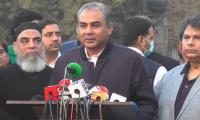There has been a plethora of reports of international bodies and institutions in recent years about the condition of minorities in India that are the target of religious animosity.
Of India’s 1.3 billion people, Muslims that make up nearly 14pc have been targetted by extreme Hindu groups. Besides Dalits, the “untouchables”, Sikhs and and Christians were also targetted.
The US State Department in its international religious freedom report last year painted a dark picture of the situation for religious minorities in India. “There were reports of religiously motivated killings, assaults, riots, discrimination, vandalism, and actions restricting the right of individuals to practice their religious beliefs,” the report said. “Authorities often failed to prosecute perpetrators of ‘cow vigilante’ attacks, which included killings, mob violence, and intimidation.”
Before that the United Nations Human Rights chief, Michelle Bachelet, in her annual report to the UN Human Rights Council, revealed that narrow political agendas were marginalising vulnerable people in an already unequal Indian society. She warned India that its divisive policies can cause hindrance to New Delhi’s economic growth. The UNHRC chief said she was receiving reports indicating increasing harassment and targeting of minorities, particularly Muslims.
“In India, where there had been significant poverty reduction in overall terms, inequality remains a serious issue,” she said.
Human Rights Watch’s World Report 2018 had also highlighted the failure of the Narendra Modi-led government in India to stop or convincingly investigate attacks against religious minorities.
“Many senior leaders of the ruling Bharatiya Janata Party (BJP) publicly promoted Hindu supremacy and ultra-nationalism at the expense of fundamental rights for all Indians,” it said, adding that “mob attacks by extremist Hindu groups affiliated with the ruling BJP against minority communities, especially Muslims, continued throughout the year amid rumors that they sold, bought, or killed cows for beef.”
The report made it clear that instead of taking prompt legal action against the attackers, police frequently filed complaints against the victims under laws banning cow slaughter.
“Dissent was labeled anti-national, and activists, journalists, and academics were targeted for their views, chilling free expression. Foreign funding regulations were used to target nongovernmental organizations (NGOs) critical of government actions or policies. Lack of accountability for past abuses committed by security forces persisted even as there were new allegations of torture and extrajudicial killings, including in the states of Uttar Pradesh, Haryana, Chhattisgarh, and Jammu and Kashmir.”
A powerful American faith rights watchdog called for India, which claims to be a multi-religious democracy, to be globally blacklisted over concerning major breaches of religious freedoms, particularly for Muslims, recommending “targeted sanctions on Indian government agencies and officials responsible for severe violations of religious rights.” The commission called on the Trump administration to impose sanctions on “Indian government agencies and officials responsible for severe violations of religious freedom,” given its treatment of religious minorities, including Christians as well as Muslims, exposing the claims by India as an adherent to global norms of rule of law.
The US Commission on International Religious Freedom (USCIRF) vice chairperson Nadine Maenza, appointed by President Trump, told a press conference that the deterioration of religious freedoms in India was “perhaps the steepest and most alarming” of all the negative developments identified around the world, harsh words indeed.
The commission accused the ruling BJP of having “allowed violence against minorities and their houses of worship to continue with impunity and also engaged in and tolerated hate speech and incitement to violence.”
Before that the US government report by USCIRF Chair Thomas J. Reese had declared: “India is a religiously diverse and democratic society with a constitution that provides legal equality for its citizens irrespective of their religion and prohibits religion-based discrimination.
However, the reality is far different.
In fact, India’s pluralistic tradition faces serious challenges … (and) during the past few years, religious tolerance has deteriorated and religious freedom violations have increased in some areas of India.
To reverse this negative trajectory, the Indian and state governments must align their laws with both the country’s constitutional commitments and international human rights standards,” Reese said.
Not only the minorities, a social scientist Deepa Naryan admitted in The Guardian, UK: “India is at war with its girls and women….India can arguably be accused of the largest-scale human rights violation on Earth: the persistent degradation of the vast majority of its 650 million girls and women. And this includes the middle classes.”
During the President Trump’s recent visit to India, fanatic mobs attacked Muslim neighborhoods in Indian capital New Delhi, with police standing by or even directly participating in the gory violence.
This shocking development was also highlighted in the USCIRF report. More than 60 people died in New Delhi due to the contentious CAA, the legislation termed divisive, discriminatory and against Muslims as well as the country’s secular constitution. Most of those killed were Muslims who were deliberately targeted and their properties and worship places burnt down. Indian journalists were also not spared by zealot mobs led by the CAA followers and RSS assailants.
Farmers threshing rice crops in their fields with the help of a thresher. — APP/FileMULTAN: Punjab Chief Minister...
A screengrab from a video of the Khyber Food Festival inaugurated at the Karnal Sher Khan Stadium on December 21,...
A representational image of a kidnapped woman with tied hands. — APP/FileTOBA TEK SINGH: A man abducted a woman and...
A representational image shows a person preparing an injectable substance. — AFP/FileKARAK: The office-bearers of a...
KP police officer interacts with the personnel in this image, released on November 8, 2023. — Facebook/Khyber...
ANP provincial president Aimal Wali Khan speaks in this image during a party gathering on January 8, 2024. —...







